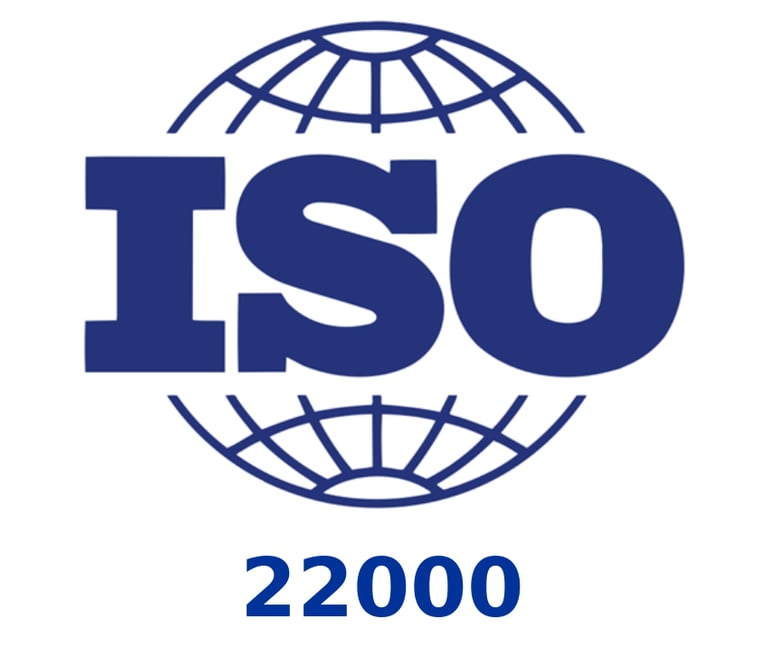
ISO 22000
ISO 22000 Food Safety Management System
The fundamental responsibility of all businesses operating in the food sector is to transport food products safely from "farm to fork" by ensuring hygienic practices and traceability at every stage of the supply chain. In this context, the ISO 22000 Food Safety Management System, developed as an international standard, provides comprehensive guidance to businesses for controlling food safety risks and delivering reliable products.
ISO 22000, developed by the International Organization for Standardization (ISO), defines specific criteria and requirements for a food safety management system for all businesses involved in the food chain. This standard details the actions businesses must take to effectively control food safety hazards and provide consumers with reliable food products.
Main Objectives of ISO 22000
Ensuring Food Safety: To provide consumers with reliable products by controlling all safety risks during the production, processing, storage, and distribution stages of food products.
Traceability: To ensure the traceability of products at every stage of the supply chain, enabling quick identification and resolution of problems.
Compliance with Legal and Regulatory Requirements: To ensure that businesses comply with legal and regulatory requirements related to food safety.
International Competitiveness: As an internationally recognized standard for food safety, ISO 22000 provides businesses with a competitive advantage in the global market.
Scope and Advantages of ISO 22000
ISO 22000 is applicable to all organizations involved in the food chain, from food producers to packaging material manufacturers, suppliers, and logistics companies. The standard requires businesses to identify, analyze, and develop effective control methods for food safety hazards.
Key Advantages for Businesses
Systematic Approach: Helps businesses manage their food safety processes in an integrated and systematic manner.
Risk Management: Enables the identification and control of food safety risks in advance.
Customer Confidence: Increases customer satisfaction and strengthens brand reputation by providing safe products.
Efficiency and Savings: Supports more efficient use of resources by reducing waste.
Global Acceptance: As ISO 22000 is an internationally recognized standard, it allows businesses to trade worldwide.


Implementation of ISO 22000
Businesses wishing to implement ISO 22000 can follow these steps:
Establishment of a Food Safety Management Team: A team is established within the business to manage this process.
Hazard Analysis and Risk Assessment: Food safety hazards are identified, and control measures are determined.
HACCP (Hazard Analysis and Critical Control Points) System: Critical control points are identified and monitored.
Training and Awareness: Employees are trained on food safety to raise awareness.
Documentation and Monitoring: Processes are kept under control through systematic record-keeping and regular monitoring.
Conclusion
The ISO 22000 Food Safety Management System enables businesses operating in the food sector to provide consumers with reliable products and to ensure sustainable business management. This standard contributes to the prevention of potential hazards by identifying food safety risks in advance and helps businesses achieve a stronger position in international trade.
Contact Us to Meet Your ISO Certification Needs and Increase Your Efficiency.
We offer affordable and effective solutions tailored to your needs.
The information presented on this website does not constitute legal advice and is intended for informational purposes only. KompassEurope.com.tr assumes no responsibility for any errors or omissions in the information contained on this website. Any decisions made or actions taken by the reader based on this information are solely at the reader's own risk, and KompassEurope.com.tr shall not be held liable for any legal consequences arising from such decisions or actions. Readers are strongly advised to seek professional legal counsel regarding their specific circumstances and concerns.
© 2025 Kompass Europe. All rights reserved. The contents of this website belong to Kompass Europe and are protected by copyright laws. Copying, publishing, distributing or any commercial use of the information on the website is possible only with written permission. By using this site, you agree to our Terms of Use and Privacy Policy.
